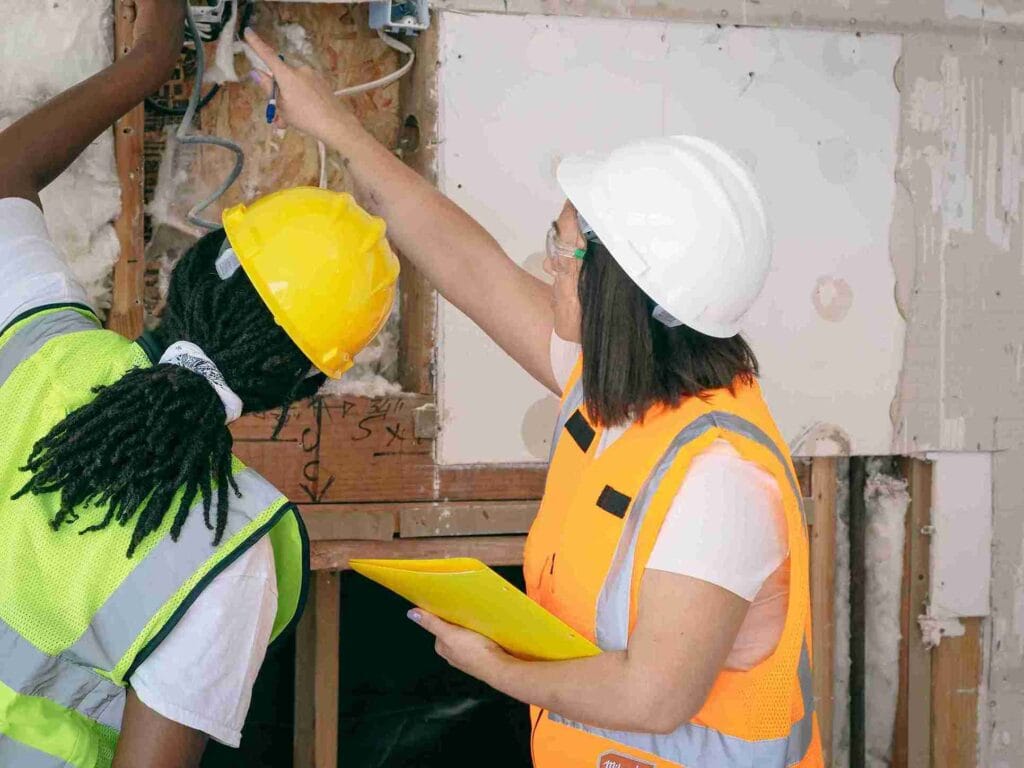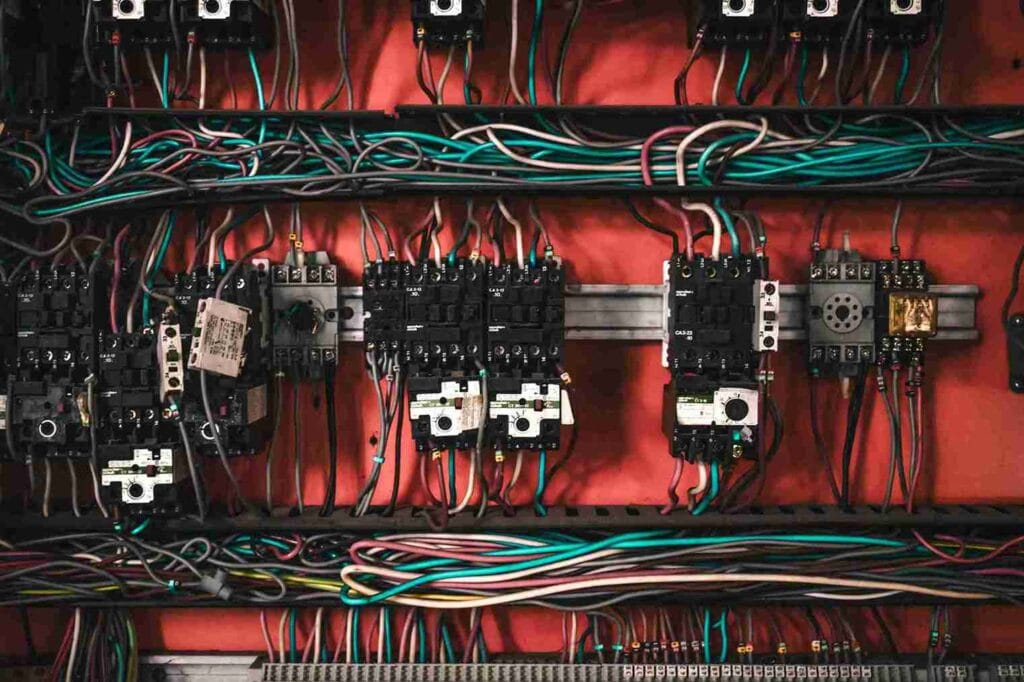Introduction to Repair Basic Electrical Wiring
Basic electrical wiring at Home is the electrical fitting of the cabling and their linked gadgets. As we know most of the people want to take things into their own hands. In this regard, we will explain some basics Electrical Wiring at Home. Before doing any basic electrical repairing for your home you will must have the basic knowledge of them which allows the homeowners to secure and solve the minor problems of their home.
What is Home Electrical Wiring
The electricity can enter in your house through the service head from a Sequence of outdoor power lines, or it can enter your house from below ground. When electricity enters your house it consists of a total three wires two wires are of 120 volts and one neutral wire that are used to give power supply to your home appliances and lights. The two wires having 120 volts are used to give the power supply to the standard home appliances.
Some appliances in your home need 240 volts to start and run therefore they need a circuit of 240 volts that is made with three wires two 120 volts wires and one neutral wire. The electrical compass panel is the main point from where the electricity is allotted and given away to your home jiggers to run them. The electrical circuit panel consists of many breakers and fuses, if an electrical system failure occurs then fuses shut the power off and keep your home appliances to be damaged.
Basic Knowledge of Basic Electrical Wiring at Home
During the basic electrical wiring at home, you have to know these terms to call them,
- Volts
Voltage and potential difference are expressed in volts.
- Watt
A watt is a unit of power. If your home appliance consumes energy at the rate of one
joule per second then it is called it consumes one watt.
- Kilowatt
There are one thousand watts in one kilowatt.

When you are repairing basic electrical wiring at home you have to know that the wires with different colors are not for decoration each serves a particular purpose, and some of them don’t play nicely role with others. You have to know about the wires so that when you are doing repairing you know the purpose of each wire so you can repair it easily.
Black wire
- The black wires carry live electrical current from the electrical circuit panel to an exit, light or other point of disembarkation.
Red wire
- They are hot wires that can be used to interconnect smoke indicators, so that if one alarm goes down, all the others do as well.
White and Grey wire
They are neutral wires that are used to connect to the neutral bus bar, which draw the attention of current and carries it throughout the house. Do not make a mistake of touching them because they still caring the charge especially when the current is not stable.
White wire
White wires are wrapped in black or red electrical strips and they are also hot wires. The strips are just let you know that these are white wires, which are normally neutral, and are being used as a hot wire alternative.

Green wire
These wires are connect through the grounding terminal in an outlet box and run to a ground bus bar in the electrical circuit panel, giving the electric current a place to get away to the ground in a result a live wire touches metal or another conductor. These wires can only connected with the other green wires but still they have current if the system has failure.
Bare Copper wire
This type of wires are usually used for underground wiring.
Blue Yellow wire
These cables although not generally set up innon-metallic nature, and they’re occasionally exercised as hot cables in an electrical conduit. The filthy bones are trippers who might be in the lashes at both the top and bottom of a flight of way to control the analogous light.
Mistakes to Avoid During the Basic Electrical Wiring at Home
- During the basic electric wiring at home to avoid the moment of ‘oops’ you should have to avoid these mistakes,
- At no time connect the wires outer side of the fuse box. If there’s no box, add the box and then connect the wires inside it.
- Keep in mind that you can cut down the wire minimum up to three inches. Don’t cut your wires too short. If you do, add a six-inch add on.
- Never depart from the sheathing helpless between frames, during the ceiling installation. Use the metal duct if the wire runs along the wall.
- You have to ensure that the joint will not lose.
- At no time, you have to attach the ground wire if you are installing the three-slot holder.

Basic Electrical Wiring at Home for Beginner
If you are repairing the basic wiring at home you do not need to call an electrician you can do it yourself,
Changing Light Bulb
If you feel that the bulb is now dim then you can change it yourself by following these steps.
- Switch off the authority force from the electrical compass panel.
- Wait for a moment to cool down the bulb because it can burn you if you touch it too immediately.
- If the bulb is at hight then you have to use the ladder or something.
- Now you have to lose it from its socket in the anticlockwise direction.
- Now you have to squinch the new bulb in the clockwise instruction in its socket.
- Turn the authority force on and allow the bulb gleam.
Changing the Ceiling Fan
- Always switch the power supply off before doing any electric work.
- Disconnect the wires by removing the plastic cap that holds them together.
- Dispatch the old fan and put it down.
- Now install the new ceiling fan according to the instructions given manually.
- Also attach the blades of the ceiling fan manually.
- Now turn the power on to check the installation of a ceiling fan.
Tight the loose connections
If you observe that your lights are blinking or that a switch or outlet is not working, check for loose connections. First you have to turn off the power circuit off and make sure that no electricity is passing through it. Then, use a screwdriver to tighten any connection and any screw.
Basic Electric Problems at Your Home
There are some common household electric problems that you can face in your daily life and you can also fix them by yourself.
- Constant surges that are caused by lightning, damage power circuits, and faulty appliances and wiring.
- Switches that are not working properly.
- An electric circuit panel which is tripping after some time.
- Light bulbs that are too dazzling and too faint.
- Light bulbs that can damage too fast.
| Aspect | Details |
| Key Components | – Electrical Service Head: Where electricity enters the home. – Electrical Circuit Panel: Distributes power to appliances and contains breakers/fuses. |
| Common Wires | – Black Wire: Live current. – Red Wire: Hot wire, often for smoke alarms. – White/Grey Wire: Neutral wires. |
| Common Mistakes to Avoid | Do not connect wires outside of the fuse box. Avoid cutting wires too short (minimum of 3 inches). |
| Basic DIY Repairs | – Changing Light Bulbs: Turn off power, wait for bulb to cool, replace with a new bulb. – Changing Ceiling Fans: Turn off power, disconnect old fan, install new fan. |
| Common Electrical Problems | Frequent surges due to lightning or faulty wiring. Non-functional switches. Circuit panel tripping. |
Conclusion
If you want to be an independent person also you need to do your work yourself and you need to break your diurnal life cases alone. If there are some introductory electric work that you can do it yourself also you do n’t want to call an electrician you need to resuscitate it yourself. You have some basic knowledge of electrical work so that during the electric work you do not face any problem. You can easily repair your home light bulbs and other appliances. For doing any kind of repairing you have to power off the supply, and continue your work.
FAQ’S
What is the size of the basic wire used in homes?
The basic wire used in the house is usually 12 to 14-gauge.
Which tool is used for the basic wiring?
The pliers are usually used for basic wiring in your homes.
How do you fix wires at home?
Turn off power, strip wire ends, twist together, and secure with wire nuts or connectors.
- How to Get Rid of Fruit Flies: Complete Guide - January 19, 2025
- Floor Swinging Lamp: The Ideal Choice - January 14, 2025
- Aluminum Keltic Windows: A Complete Guide - January 13, 2025
